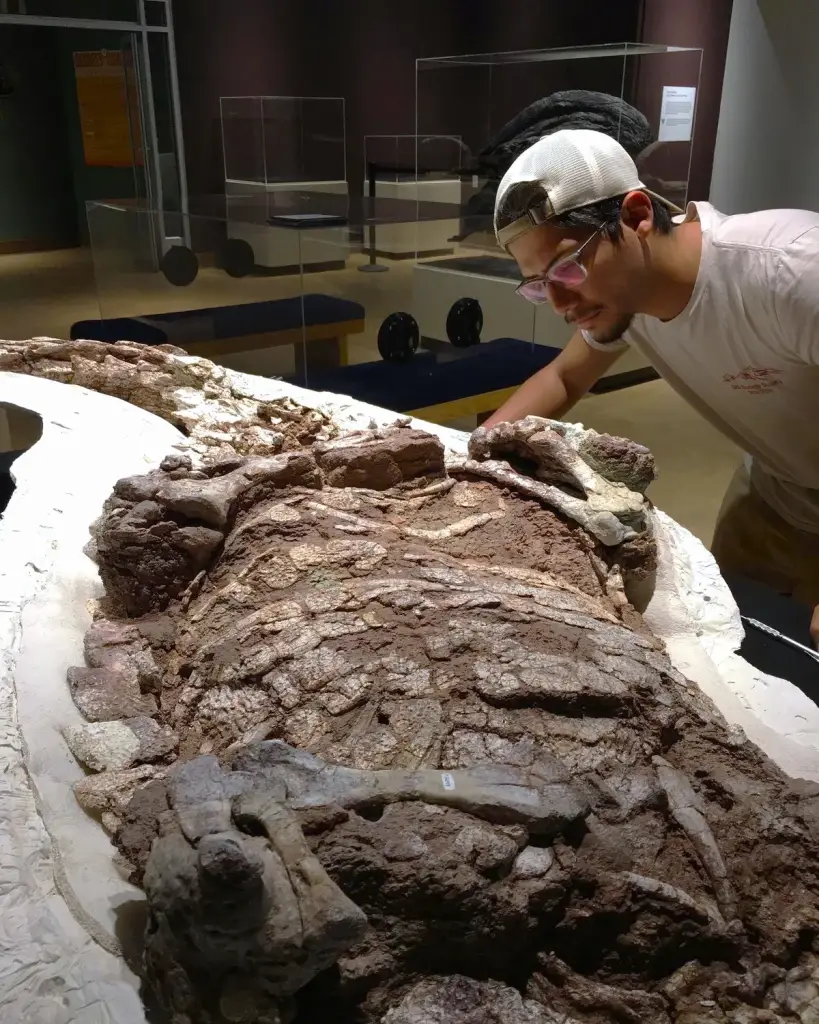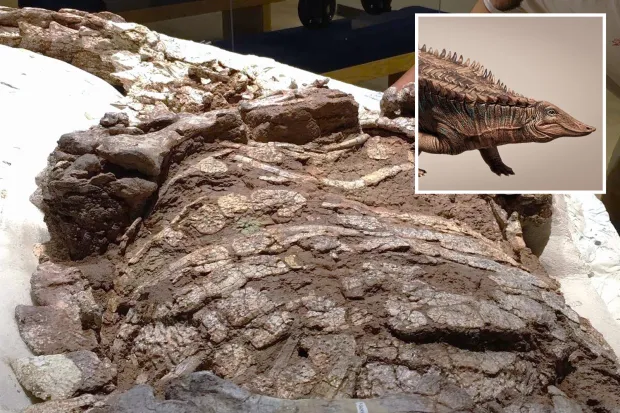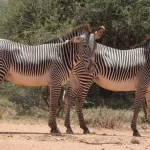Key Takeaways:
- A newly discovered fossil from the late Triassic reveals a previously unknown species of aetosaur, a large armored relative of crocodiles.
- Named Garzapelta muelleri, the fossil showcases unique features such as a combination of bony plates and spikes.
- Researchers faced challenges in classifying the species due to its mixture of characteristics from different aetosaur groups.
- The discovery sheds light on the evolution of aetosaurs and highlights the phenomenon of convergent evolution.
- This finding underscores the importance of continued paleontological research in uncovering Earth’s ancient biodiversity.
In 1989, a fossil was unearthed, revealing a newfound species of aetosaur—an immense armored relative of crocodiles that inhabited the late Triassic era.
215 million years ago, our planet was traversed by a colossal armored relative of crocodiles, adorned with plates ensconced within its skin and adorned with curved spikes along its sides, as disclosed by scientists.
The recently discovered species, identified within the Cooper Canyon Formation in the northwestern region of Texas, belonged to the aetosaur lineage. These robustly limbed creatures attained lengths of up to 16 feet (5 meters) and boasted a protective covering of bony plates known as osteoderms. They were dubbed the “fortresses of the Triassic,” according to a statement released by The University of Texas at Austin.
A substantial portion of the creature’s dorsal carapace, or back armor, was excavated by researchers, as detailed in a study published on January 11 in the journal The Anatomical Record.
“We possess elements ranging from the posterior region of the neck and shoulders to the very extremity of the tail,” remarked lead author William Reyes, a doctoral candidate at The University of Texas at Austin. “Traditionally, such extensive material is rarely encountered.”
During the late Triassic era (237 million to 201 million years ago), aetosaurs dominated Earth, inhabiting every continent except Australia and Antarctica. Unlike their modern crocodilian counterparts, which subsist solely on a carnivorous diet, aetosaurs were primarily omnivorous.
The late paleontologist Bill Mueller, in collaboration with local amateur collector Emmett Shedd, made the initial discovery of the newly described fossil in 1989. Preliminary investigations conducted in the early 2000s suggested that the creature likely represented a novel species of aetosaur, although its evolutionary lineage remained enigmatic.
Reyes and his team christened the creature Garzapelta muelleri. The genus name melds “Garza” from Garza County, the site of its discovery, with “pelta,” signifying “shield” in Latin. The species epithet pays homage to Mueller.

Distinguished by an array of distinctive characteristics, including an unprecedented combination of bony plates, the fossil stands apart from known aetosaurs. Nonetheless, the team encountered challenges in determining its placement within the aetosaur family tree.
While most aetosaurs fall into either of two primary categories—Aetosaurinae and Stagonolepidoidea—G. muelleri exhibited osteoderms on its dorsal surface resembling those of Aetosaurinae species like Rioarribasuchus chamaensis, as well as lateral osteoderms akin to those of the genus Desmatosuchus within Stagonolepidoidea, according to the study.
With caution, the team inferred that G. muelleri bore greater resemblance to Aetosaurinae overall and proposed that its spikes likely evolved independently through a process known as convergent evolution, wherein unrelated or distantly related species develop similar traits independently.
“The convergence of osteoderms across distantly related aetosaurs has been previously observed, but the carapace of Garzapelta muelleri serves as the most exemplary instance, illustrating the extent to which it may occur and the challenges it presents in our phylogenetic analyses,” remarked Reyes.


